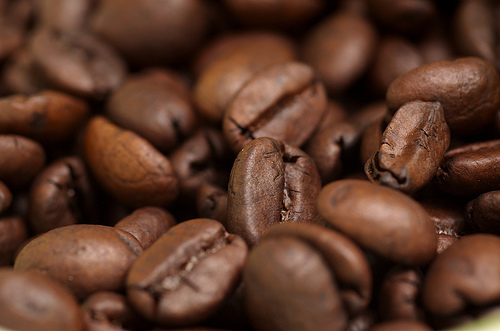Here’s a fact about me: I hate coffee. Like really, passionately hate coffee. There is nothing about coffee that I find enticing or desirable. It smells bad, it tastes bad, it gives you disgusting breath. It is a vile, awful drink.
My hatred of coffee is not arbitrary. There’s a real reason behind it. The reason? Is my 11th grade math teacher. He had the worst coffee breath of anyone ever. And he always had putrid coffee sitting in a mug that never looked quite clean enough. And I had the good fortune to sit right in front of his desk, during first period, at 7:30 in the morning when the smell was nice and fresh. Every day. For an entire school year. Needless to say, it traumatized me. Traumatized me to the point that I never, ever drink coffee. Ever. (I also have a severe hatred of anything orange smelling/flavored but that is another story for another time). In fact, no form of coffee is acceptable. Unless it’s a Coffee Crisp. Those are totally acceptable.
My aversion to coffee got me thinking. When someone is trying to cut expenses, what is one of the first suggestions? Make coffee at home. I understand the suggestion. Typically, when you make something at home, you spend a lot less money than if you get it somewhere else (clarification: this applies mainly to food. Usually. There are circumstances where food in a restaurant is cheaper than making the same food at home). I would assume that this applies to coffee as well. Or does it? Let’s examine (admin note: these numbers come from my mother. I love her but she is not the most reliable source for prices. And, as always, prices fluctuate based on brand, location, amounts, preferences, etc. The prices used are Long Island prices).
Scenario #1: Purchasing coffee from Dunkin Donuts. From my understanding (read: information from my mother), a medium coffee from DD costs approximately $3. Assuming one coffee per day, 7 days per week, someone would spend $21 per week. Average monthly cost: $84
Scenario #2: Making coffee at home. Again from my understanding (again, information from my mother), a pound of coffee costs around $10, filters are $2 for 100, a standard coffee maker is around $35. A reusable coffee mug (’cause if we’re saving money, we’re going to save the environment, too) costs around $10. That’s a total of $57 just to get started. Based on my scientific research (Google search), a pound of coffee lasts roughly 2 weeks, so that’s 2 pounds of coffee every month. Then let’s assume that you need one of those fancy flavor things (because I can’t imagine even wanting to taste coffee without some enhancement). So that’s what? An extra $4 per week, or $20 per month. I won’t factor in milk or sugar since you’d probably buy those anyway and the amount is nominal. Average monthly cost after start-up costs: $42
The monthly savings is around $42 for making coffee at home. That’s a pretty hefty difference for someone trying to make ends meet or trying to meet a savings goal. $42 can go a long way and represent a big surplus in a budget.
Obviously, there are a ton of variables at play: how much a person drinks, how big of a size coffee is purchased from DD, if the coffee is bought from somewhere other than DD, the brand of store bought coffee that is used. These will all affect the net savings. But the point that making coffee at home is, overall, cheaper than purchasing coffee from DD or Wawa or Starbucks is not lost. Mathematically, it makes sense. And if you’re struggling or need to free up extra money, this is a good place to start.
Of course, I advocate that everyone gives up coffee altogether. Because when I rule the world? That will happen.
